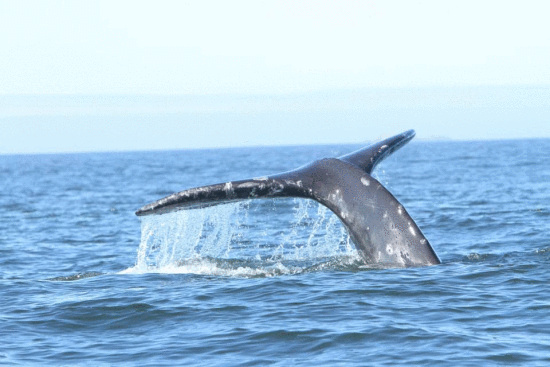A humpback whale in the Navy’s Northwest Training and Testing range by Jeff Jacobsen.
A quick reminder: The period for public comment on the Navy’s proposed sonar and explosive weapons testing was extended through Tuesday, April 15. If you haven’t already submitted comments to the Navy’s website, you’ll want to do it before then.
Environmental advocates (including the Northcoast Environmental Center and Humboldt Surfrider) are urging the Navy to use “exclusion zones” – to avoid areas known to be critical habitat and feeding/foraging grounds for whales and dolphins.
A recap
- The proposed activities are expected to injure, disturb or kill more than 100,000 individual animals, including 29 different marine mammal species protected under the Marine Mammal Act.
- The proposed activities can cause whales and dolphins to abandon important habitat, halt foraging behavior and forgo critical feeding opportunities needed to survive.
- Similar testing and training projects have resulted in mass strandings elsewhere, which is not adequately addressed in the Environmental Impact Statement.
- This proposal does not ensure adequate mitigation to prevent harm to sea life.
- In particular, on-ship “lookouts” are an insufficient means of detecting nearby marine mammals.
- Areas of critical habitat, foraging and feeding have been identified and should be avoided.
- Establishment of “exclusion zones” around these areas would go a long way to protecting endangered species, such as the blue whale.
- More progressive alternatives to traditional training and testing should be explored; simulations and other non-harmful training methods should be emphasized and utilized to the maximum degree.
PREVIOUSLY
- How Navy Weapons Training Harms Whales, Dolphins
- Share the Love, Stop the Hurting
- Fecal Matters, Whales and Birds
ELSEWHERE:
- Natural Resource Defense Council’s Michael Jasny on KHUM’s Coastal Currents: March 5, 2014
- Earthjustice staff attorney at Steve Mashuda on the NEC’s EcoNews Report: February 27, 2014
- Navy Testing puts Marine Mammals at Risk

CLICK TO MANAGE